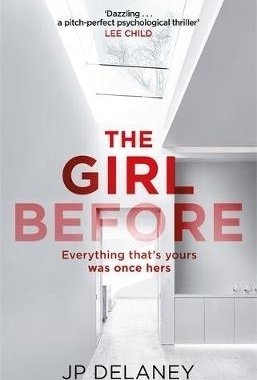Hazel (1853 KP) rated How to Draw Anything in Books
Dec 17, 2018
First of all an artist needs to be able to look properly. Without studying the subject or object properly, no one would be able to produce an accurate sketch. Starting with landscapes, Linley tells the reader how to and what to look for when beginning a drawing in order to get a basic outline. It is only after this is down on paper that specific details can be added.
Linley explains various methods of shading and line marks to give a suggestion of perspective, and emphasises that an illustration does not need to be 100% accurate – that is what cameras are for. After landscapes, Linley takes the reader/future artist through plants, animals, people and cartoons in a similar manner.
Each chapter provides the reader with a few assignments to undertake based on what they have read, or the example illustrations. Many of these tasks are to copy Linley’s own examples, however he stresses that the outcome does not need to – or rather should not – look exactly like his. Each artist needs to develop their own style.
I found <i>How To Draw Anything</i> a lot more useful than the ever popular step-by-step guides that most people gravitate to. In those types of books we are NOT taught to draw, we are taught to copy. You may be able to accurately draw the same cat as the artist/author of the book, but you would not know where to start when face with a real life cat. Linley tells us what to look out for and where to start in these situations – you feel like you are actually learning something.
Mark Linley comes across as a humorous individual – his writing is full of puns and quips, intending to make the reader smile or laugh out loud, thus making them feel more relaxed about the subject. Linley does not only attempt to teach people how to draw, he tries to make each of us feel more comfortable about our abilities and encourages us to keep on trying.
Before reading this book I had already begun developing my own illustration style, however I gave a few of Linley’s assignments a try (see <a href="https://hazelstainer.wordpress.com/2016/02/19/how-to-draw-anything-a-review/">here</a>;). I am pleased with my outcomes and feel inspired to try more landscape drawings in the future.
Emma @ The Movies (1786 KP) rated The Girl Before in Books
Feb 21, 2021
The books is split into short chapters from one of two points of view, Emma, the previous tenant and Jane, the new tenant. This works well although took me slightly longer to get used to, not because of the characters or the story line, but because of the writing itself.
Something I noticed fairly quickly was that there are whole sections of this book where speech is basically ignored. It'll appear as you would expect it to in the writing but there are no speech marks to highlight it. At the time of reading it was horrendously annoying, having just flicked through a few pages while writing this I have noticed that all the speech marks are used in Jane's chapters and not in Emma's. I can only assume that it's meant to reflect the two different characters and their personalities, but frustrating is the only way to describe it. I constantly noticed it as I read but made no link to any reason for it until this very minute. If it is a device, I can't say it was very successful, honestly it felt more like a massive error had been made in editing.
That aside, the author has created some very engaging characters. You pick up enough about them as you progress through the book to pick up things of the upcoming story and that always entices you to read on. The book also has a lot of unsettling male characters in it. The women in comparison seem relatively normal. This could be another way to get you on board with the two leads of the book and make you protective of them. But again, that's not something I noticed until after I'd finished the book.
What is there to say about that ending? Unexpected? Overkill?
I enjoy a twist and turn as much as the next person but this book throws them at you. Kudos to the author again for crafting the story well, I did not guess all the twists that it ended up taking. Some were necessary but others seemed to just be there to have a conclusion to every piece of the story. An effort which didn't entirely feel pleasing.
It was an entertaining read, and at just over 400 pages it's easy to whizz through in a day. There's a preview at the end for Believe Me. Reading it just now I'm drawing parallels between how chapters are designed to match their character, I don't think it's for me as a style but the story itself is mildly intriguing. Hopefully it showcases some more well developed characters.

PDF Editor & Reader Pro - Take Notes, Sign & Fill
Productivity and Business
App
Easily fill PDF forms, annotate PDFs, highlight texts, sign and stamp PDFs, add bookmarks and notes,...

Interactive Alphabet ABC's
Education and Games
App
Positively, the BEST Alphabet experience from crib to kindergarten! Baby - A guided A to Z touchable...

PicsPlay Pro
Photo & Video
App
Spotlighted on Forbes as one of "Best Photo Apps For Tablets" by Amadou Diallo, July 3rd, 2013 ...

BlockyTime - Track your time no need to Start/Stop
Productivity and Utilities
App
BlockyTime, A simple time logger no need to tap Start/Stop. ### App Store Featured of 2016 in China...
Purple Phoenix Games (2266 KP) rated Illumination in Tabletop Games
Oct 5, 2021
Illumination is a game about two monks who are tasked with illuminating the pages of manuscripts with drawings in the hopes of becoming the next head of the Scriptorium: The Scriptmaster, one might say. However, one of the monks gets a little itch and begins to draw irreverent subjects, like demons, dragons, and such. Which monk will earn the made-up-by-me title of Scriptmaster? Guess you will have to play to find out.
DISCLAIMER: We were provided a copy of this game for the purposes of this review. This is a retail copy of the game, so what you see in these photos is exactly what would be received in your box. I do not intend to cover every single rule included in the rulebook, but will describe the overall game flow and major rule set so that our readers may get a sense of how the game plays. For more in depth rules, you may purchase a copy online or from your FLGS. -T
As with many games that are well endowed with components, setup can be a bit of a task. The game will be focused around a few main areas. First, the three manuscript pages are placed on the table in any orientation, with the purple wild Drollery tiles placed on one text box on each page. The Monastery mat is placed nearby as well, with the Abbot pawn randomly placed on a blank station. This pawn will be moved around the map during play to determine which rituals may be performed at any one time. Each player will have their own player mat, upon which will be placed their starting gold (1 for the Reverent player and 5 for the Irreverent player), as well as their starting nine Illumination tiles. The rules mention separating all the Illumination tiles into stacks of three, choosing three of these stacks to flip over and place on the play mat without altering the order. This is very important to keep the tiles in their randomized order. The remainder of the tiles are to be placed nearby in stacks of three. Each player is dealt one starting Scriptorium card and a random Crusade card that will offer bonuses at the end of the game. Once all setup, the game may begin with the Reverent player’s turn.
On a turn, the active player will choose from their mat one row or column of three tiles to be played. They take the three tiles and place them upon one of the three book pages on the table, in the margins. From there the player can choose any tile from the margin to place onto the page in any order they wish, upon any quill icon they choose (except for coin tiles – those simply grant two coins immediately). If the tile is placed on a quill of a matching color to that of the tile, the player will immediately collect one coin and place it on the player mat. If the tile is placed on a quill and orthogonally touches a tile of the matching color, the player then collects a Ritual token of the same color. These Ritual tokens are used in sets of three, four, or five in order to earn VP for end of game scoring. Each purple Drollery tile is wild for the purpose of placement and Ritual token collection. Each tile placed will collect its earnings immediately, and any coins earned may be spent immediately as well.
A player may use coins for several purposes throughout the game: move a tile from the margin of one book to the margin of a different book, move the Abbot one space along the track for Ritual purposes, or to draw a Scriptorium card. The other resources are Ritual tokens, and may be spent during the turn as well. In order to spend these, the Abbot must be on the matching location on the Monastery board, and the player may spend three, four, or five matching tokens to perform the Ritual. They discard the tokens, place one of their cubes upon the appropriate icon on the Monastery mat for VP at game end.
At any time during the turn Scriptorium cards may be played. These are very special cards that allow the player to complete certain actions that break the normal rules. This could be a free movement of the Abbot, or switching places of two tiles on the player mat, or even banishing one of the opponent’s tiles to another book entirely.
Why mention the battles in the intro if they are not part of the game? They are. Once opposing foes are placed orthogonally from each other, and all involved tiles are completely enclosed by other tiles or board obstacles, a Bounded Battle will begin. Battles are simple to resolve as it requires players to count the number of combatants on both sides and whichever side has more forces wins the battle. The winner places their cube on the appropriate battle card near the Monastery mat, and the loser gains coins equal to the number of their tiles lost to battle. Tiles that are lost are simply flipped to its opposite side.
Play continues in this fashion of players choosing and placing tiles, drawing and using Scriptorium cards, performing Rituals, and resolving Bounded Battles until both players pass their turn. The game is then over and VP counted in all their places around the play area. The player with the most points becomes the next Scriptmaster Flex and is able to enhance or defile as many manuscripts as they like!
Components. This game has a lot of components, but they are mostly cardboard tiles, cardstock cards and mats, and wooden cubes. The quality is all very fine, as to be expected with Eagle-Gryphon games. The art, for me, is the biggest drawback of the game. I UNDERSTAND why it looks the way it does – in trying to stick with a Medieval manuscript theme some decision were made on the style. It just doesn’t vibe with me. I took a look at the new edition of The Road to Canterbury, by the same designer and publisher, and loved the look of it. I REALIZE that the tiles are supposed to be not only reminiscent of the art style of that time period, but also imaginations of monks and their doodles, but it’s just not for me. I do like the looks of everything else except the art on the tiles, and when that’s the majority of the components I am looking at, I sigh a little. I am absolutely no artist, and I can acknowledge that the art presented is very good and in line with the theme. Oh well.
The game play is very solid, and I do like it quite a bit. Everything makes a lot of sense as to why you are doing the actions, and the most difficult thing to comprehend the first time through is the Bounded Battles. You see, battles don’t immediately happen when you pit one foe against another. In fact, all tiles engaged need to be surrounded by other tiles or battleground obstacles before battle can begin. This allows both sides to add more tiles to help sway the balance of power, and can get a little confusing for some players. Not ME, of course, but SOME players (ok it was totally me the first time through). I am thankful that resolving the battles are pretty simple, and winning battles gives the victor a cool five points.
Other aspects I really enjoy are the Scriptorium cards and the Rituals. Again, the Scriptorium cards can be drawn for two coins during the game and can provide excellent rule-breaking choices to the players. Any time a game has cards that bend the rules, I generally am a fan. The Rituals are merely tokens that are collected and then turned in for points. This doesn’t necessarily sound that interesting until I reveal that a player board only has space for seven items: Ritual tokens AND coins included. So a player may be stacking up coins, and not have space for Ritual tokens or vice versa. Hard choices need to be made sometimes, but to help with that Ritual tokens can also be used like a coin, but not the other way around. So there is no buying Ritual tokens. Having that restriction of seven items on hand is a really nice touch, and makes each turn important.
So all in all I enjoyed my plays of Illumination. I have yet to try the solo version that is included, but I will soon. I feel that of the two Medieval series games I have played I prefer The Road to Canterbury, but I do like the different feel of Illumination. Having a solo mode is also very attractive to me because my wife and I do not always have matching schedules where we can game together. I like Illumination for the actual gameplay, but the art is a turn-off for me. Purple Phoenix Games gives this one an irreverent 4 / 6. If you are looking for something a little different that features some interesting game play, tons of choices, yet is restrictive as well, take a look at Illumination. Try not to complete too many wine and candle rituals though. Those two things don’t mix very well in my experience.
Purple Phoenix Games (2266 KP) rated Millennial Manatees in Tabletop Games
Mar 11, 2021
Millennial Manatees is a worker-placement(ish) card(ish) game for one to four players. In it players are assuming roles of manatees tasked with paying off their identical student loan debt: 20 coins. The first player to make wise venture investments and create the best ROI will be crowned the winner! Please keep reading. This game is not at all a powerhouse economic simulation. It’s a fun game with manatees, avocado toast, and IT COMES IN A FANNY PACK.
DISCLAIMER: We were provided a copy of this game for the purposes of this review. This is a retail copy of the game, so what you see in these photos is exactly what would be received in your box fanny pack. I do not intend to cover every single rule included in the rulebook, but will describe the overall game flow and major rule set so that our readers may get a sense of how the game plays. For more in depth rules, you may purchase a copy online directly from the publisher (or Amazon if you wish) or from your FLGS. -T
To setup carefully empty the contents of the fanny pack game box(?) and unfold the game board. Upon it will be placed separated (but shuffled) face-up decks for Basic, Salty, and Big Mood venture cards. Next to these shuffle the Volunteer cards and place the deck face-down. Shuffle the remaining Manatee cards and place somewhere around the game board. Each player chooses a color of manatee and takes all the components matching its shirt color. Unlike the photo below place all “fanatee pack” tokens with the 7 coins side face-up and each player will start the game with three coins. The players will set their debt trackers at the starting position of the debt track, and the first player receives the avocado toast token. Yes, the big one you see below.
Each round begins with the avocado toast holder and continues around the table. The first player will place their manateeple (ooh I like that one) on any card or printed space on the game board. Options include: Basic, Salty, or Big Mood venture cards, Volunteer cards, Boomer Handout board space, Take the Toast board space, and Pay Back Student Debt board space. Once the current toast holder has placed their manateeple the next player may place on any other non-occupied space or card available. Note: the Pay Back Student Debt space is always available for any number of manateeples.
For the cost in coins printed on the cards, the Basic, Salty, and Big Mood venture cards can be purchased and placed in the player’s tableau of cards. This represents the player investing in certain business ventures in the hopes of earning more coins in the long run. Once a player has a venture card in front of them the card will specify how it will be activated and the benefit therein. Many cards allow the player to collect coins, but sometimes cards allow for stealing of other players’ coins or other nefarious doings.
The volunteer cards are drawn face-down and once read by the drawing player are kept face-down in their tableau until the proper game phase activates it or the player plays it to the discard pile.
Once a player decides they want to pay down their debt they will visit the Pay Back Student Debt space on the board. When they do this they will immediately use ALL coins they have earned and apply it directly to their debt by moving their tracker down the line by the amount paid.
By placing the manateeple on the Take the Toast space, that player simply takes the toast token and becomes the first player of the next round. By placing the manateeple on the Boomer Handout space the player will gain one coin during the Manatee phase.
The Manatee phase consists of the first player flipping the top card of the Manatee deck. Most of the cards in this deck are art depictions of manatees in different attire and hairstyles. When a Manatee card is flipped during this phase, all players reference any venture cards in their tableau to see if the manatee will trigger their card. For example, a manatee may be dressed in an orange shirt, wearing sunglasses, and holding a yoga mat. For those players whose venture cards are triggered by any of these items, their cards will bestow their benefits. There are two other types of cards in this deck as well, but I will let you experience these when you play.
Turns continue in this fashion of placing manateeples in unique spaces or cards, resolving any immediate effects, playing volunteer cards, flipping and resolving Manatee cards, and paying down student debt until one player has paid off the entire sum and wins the game! Then the hardest part of the game will commence: attempting to put all the components back in the fanny pack so that they are not damaged. Good luck.
Components. This game has some pretty spectacular components coupled with some really great art. Obviously, having a game packaged in a fanny pack is just delightful, even though I typically despise non-boxed games. Secondly, all the wooden manateeples and avocado toast tokens are just amazing to behold and handle. The cards are good quality and the game features incredible art throughout. I am a big fan of this art style – it is very cartoony and very cool. This theme is just perfection and the game that lies beneath the theme is very surprising.
I say the game beneath the great art and theme is surprising because I was completely not expecting to like this one as much as I do. At its heart it is a very light worker-placement game with hints of take that and based on using currency as victory points. I like all of those mechanics quite a bit, so combining these with aforementioned art and theme works for me on another level.
I feel this game is something I can bring out with almost any crowd of adults and have a smashing great time. There are so many little jokes packed into this little game that make me giggle every time I see them. And come on, a first player token that is avocado toast? It’s too good! I love all the colors assaulting my eyes, and I love all the hate-placement that happens, and I didn’t know that I love manatees as much as I now do.
Look, I am usually pretty positive about the games I play. But I also play a lot of stinkers. This one, thankfully, delivers a super fun game experience in an hour or less, even though the theme is absolutely ridiculous. But I also find that so charming. If you are looking for that special WOW game that is relatively light but incredibly satisfying to play, I strongly recommend checking out Millennial Manatees. Purple Phoenix Games gives this one 10 / 12 soy super americanos (is that a thing?). Display the pink fanny pack with pride next to all your super-serious games and watch as your visitors flock to it and ask what it is. Then play it with them and watch them fall in love as we did. I am very happy to now have this one in my collection.
Gareth von Kallenbach (980 KP) rated Team America: World Police (2004) in Movies
Aug 14, 2019
The film is a puppet movie based upon the old Thunderbirds television show about a team of specialists who fight to save the world from all manner of threats both real and imagined. The story is told entirely by puppets and miniatures which allows Stone and Parker to push the boundaries much further than they would be allowed to with live actors and in doing so, give the audience some of the deepest albeit raunchiest laughs seen in a long time.
The story opens with Team America battling the terrorists in Paris. Ever quick on the trigger, the team is able to stop the deployment of a weapon of mass destruction but in the process much of the cities famed landmarks fall from collateral damage.
Forced to find a new team member, the leader of Team America, Spottswoode recruits a stage actor named Gary Johnston to join the team and infiltrate the terrorist organization to learn what new attacks are being planned.
While this is seen as a good move by the team, there are parts of the team that are unsure of this as one in particular does not trust actors and thinks that he will escalate an already volatile situation. Undaunted, the team sets off for Cairo Egypt and eventually leaves a trail of mayhem and destruction in their path.
It is at this point that the real story of the films kicks into gear. It is learned that North Korean leader Kim Jong Il is working with the terrorists to plot the ultimate attack and have convinced a cadre of Hollywood actors to attend a peace conference with other world leaders in an attempt to undermine Team America.
In between battles, Team America has plenty of time to take on other concerns such as love, self-doubt, personal issues, and suspicions, some of which result in a side-splitting sex scene that will soon become legend, as even though it involved puppets, it has to be severely edited in order to avoid an NC-17 rating. As it stands, it is one of the funniest moments in cinematic history and worth the price of admission alone.
The film does a good job of mixing comedy and commentary without ever drawing a line and saying this is how it is. We see Team America as a gun happy bunch, but we are also shown that they are true patriots who are willing to do what it takes to keep the country safe. Such is the genius of Parker and Stone as they are able to create a biting social commentary that makes you aware of issues without pounding the audience over their heads with the creator’s viewpoints. Instead the audience is given a situation and watch things taken to highly comical levels in an effort to entertain. People are free to draw their own conclusions and interpretations of the messages in the film as despite your beliefs or political leanings, we all laugh. There will be those that take umbrage to the crude humor and language, and others will not like what they may call a right-wing message. Instead I looked at the film as a very funny comedy with solid social commentary.
The only fault I had with the film is that it does drag a bit about ¾ in before getting to the final confrontations but those are well worth the wait. The film also parodies many action films and it is fun to try to try to uncover which film is being parodied. The puppets themselves are very impressive as their movements and facial expressions are easily the best ever captured on film.





